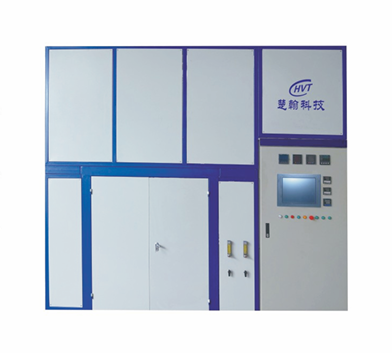Modern Approaches to Energy Optimization in Metal Melting Operations
The metal melting industry stands at a critical juncture where energy efficiency has become paramount for both environmental sustainability and operational profitability. Metal melting furnace energy efficiency represents not just a cost-saving measure, but a fundamental shift in how foundries and metal processing facilities approach their operations. With rising energy costs and increasing environmental regulations, optimizing furnace performance has never been more crucial.
Today's metal processing facilities face multiple challenges in maintaining efficient operations while meeting production demands. Energy consumption typically accounts for 30-40% of total operating costs in metal melting operations, making it one of the largest expenses that directly impacts the bottom line. Understanding and implementing energy efficiency measures can lead to substantial savings while simultaneously reducing environmental impact.
Essential Components of Furnace Efficiency
Insulation and Heat Retention Systems
One of the fundamental aspects of metal melting furnace energy efficiency lies in proper insulation. High-quality refractory materials and modern insulation technologies play a crucial role in minimizing heat loss. Advanced ceramic fiber linings and composite insulation materials can reduce heat loss by up to 30% compared to traditional materials.
Regular maintenance and inspection of insulation systems are essential. Even small gaps or deterioration in furnace lining can lead to significant energy losses over time. Modern thermal imaging technologies can help identify weak spots in insulation, allowing for targeted repairs and upgrades.
Combustion System Optimization
The efficiency of the combustion system directly impacts overall furnace performance. Modern burner systems with precise fuel-to-air ratio controls can significantly improve energy utilization. Implementation of oxygen-enriched combustion systems can increase melting efficiency by 20-30% while reducing fuel consumption.
Advanced control systems with real-time monitoring capabilities enable operators to maintain optimal combustion conditions throughout the melting cycle. This includes adjusting flame patterns, monitoring exhaust gas composition, and maintaining ideal temperature profiles across the furnace chamber.
Advanced Control and Monitoring Technologies
Digital Control Systems Integration
Modern metal melting operations benefit greatly from integrated digital control systems. These sophisticated platforms provide real-time monitoring of critical parameters including temperature distribution, energy consumption, and melt quality. Advanced sensors and monitoring equipment allow for precise control over the entire melting process, ensuring optimal energy usage at every stage.
Implementation of artificial intelligence and machine learning algorithms can further enhance metal melting furnace energy efficiency by predicting maintenance needs and optimizing operational parameters based on historical data analysis. These systems can automatically adjust furnace settings to maintain peak efficiency under varying load conditions.
Data Analytics and Performance Tracking
Comprehensive data collection and analysis systems are essential for maintaining and improving energy efficiency. Modern furnaces equipped with advanced monitoring systems can track key performance indicators (KPIs) such as specific energy consumption, melting rates, and temperature uniformity. This data provides valuable insights for process optimization and preventive maintenance scheduling.
Regular analysis of operational data helps identify patterns and trends that may impact energy efficiency. By understanding these patterns, operators can implement targeted improvements and maintain optimal performance levels consistently.
Operational Best Practices and Maintenance
Strategic Load Management
Efficient load management is crucial for optimizing metal melting furnace energy efficiency. Proper charging practices, including preheating of materials when possible, can significantly reduce energy consumption. Coordinating production schedules to minimize idle time and maintain consistent furnace operation helps maximize energy utilization.
Implementation of batch optimization strategies, including careful consideration of charge material composition and size distribution, can lead to faster melting times and reduced energy consumption. Proper scheduling of melts can help maintain optimal furnace temperatures and reduce the energy needed for heating and holding.
Preventive Maintenance Programs
Regular maintenance is essential for maintaining peak energy efficiency. A well-structured preventive maintenance program should include regular inspection of critical components, timely replacement of worn parts, and periodic calibration of control systems. This proactive approach helps prevent energy losses due to equipment deterioration or malfunction.
Training operators in best practices for furnace operation and maintenance is equally important. Well-trained personnel can identify potential issues early and take appropriate corrective actions before they impact energy efficiency.
Emerging Technologies and Future Developments
Alternative Energy Sources Integration
The future of metal melting furnace energy efficiency lies in the integration of alternative energy sources. Hybrid systems combining traditional fuel sources with renewable energy options are becoming increasingly viable. Solar preheating systems and electric boost capabilities can supplement conventional heating methods, reducing overall energy consumption and environmental impact.
Research into new energy storage technologies and heat recovery systems continues to advance, offering promising solutions for further efficiency improvements. These developments could revolutionize how metal melting operations manage and utilize energy resources.
Smart Manufacturing Integration
The integration of metal melting operations into smart manufacturing ecosystems represents the next frontier in efficiency optimization. Internet of Things (IoT) devices and advanced automation systems enable unprecedented levels of process control and energy management. These technologies allow for real-time optimization of operating parameters and predictive maintenance scheduling.
Future developments in artificial intelligence and machine learning will further enhance the capability to optimize energy usage through predictive analytics and autonomous control systems. This evolution towards smart manufacturing will continue to drive improvements in metal melting furnace energy efficiency.
Frequently Asked Questions
What are the most significant factors affecting metal melting furnace energy efficiency?
The key factors include furnace insulation quality, combustion system efficiency, load management practices, and maintenance conditions. Advanced control systems and proper operator training also play crucial roles in maintaining optimal energy efficiency.
How often should furnace insulation be inspected and maintained?
Regular inspections should be conducted at least quarterly, with comprehensive assessments performed annually. However, thermal imaging inspections can be done more frequently to detect potential issues early and prevent energy losses.
What are the typical payback periods for energy efficiency improvements?
Most energy efficiency improvements in metal melting furnaces show payback periods ranging from 6 months to 3 years, depending on the specific upgrades implemented. Advanced control systems and insulation improvements typically offer the quickest returns on investment.
How can new technologies improve furnace energy efficiency?
Modern technologies such as AI-driven control systems, IoT sensors, and advanced materials can significantly improve energy efficiency through better process control, predictive maintenance, and reduced heat losses. These technologies can lead to energy savings of 20-40% compared to traditional systems.


